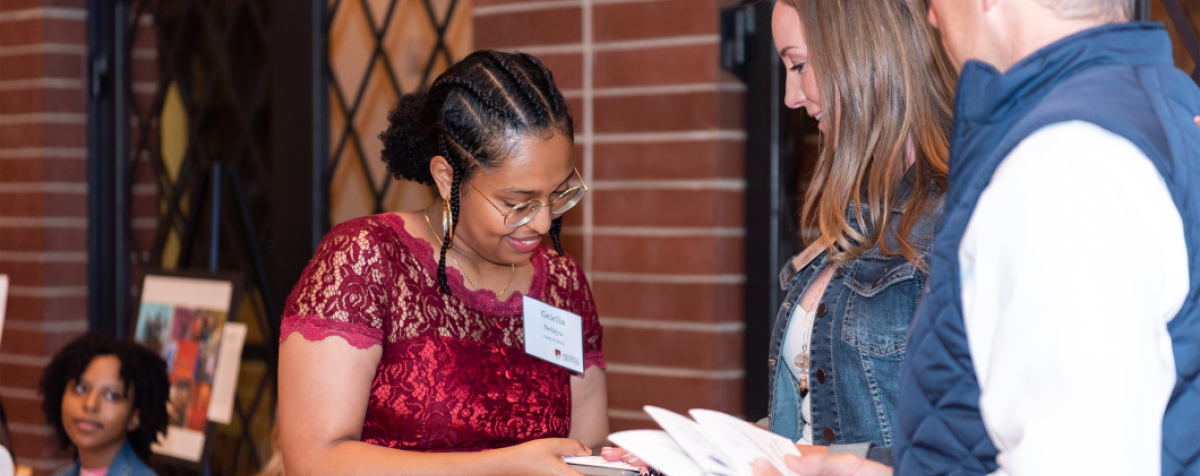Scholarships & Awards
On this page:
- Puksta Scholars Program
- Kimmy Foundation Community Service Professional Award
- Scholar Development & Fellowship Advising
- Community Engagement Photo Showcase
Crimson & Gold Awards
CCESL honors outstanding students by nominating an undergraduate and graduate student in the following categories annually: Public Good Student of the Year, Service Student of the Year, and Community Organizer of the Year. These students are recognized through the university-wide Crimson & Gold Award Ceremony put on by the Office of Student Engagement.
-
Public Good Student of the Year
This award honors a student who has demonstrated outstanding commitment to the public good by applying their knowledge and intellectual resources to enhance social capital and community development.
- 2025 Winners:
- Graduate: Iris Vanegas, PhD Student, Social Work
- Undergraduate: Brooke Watley, Political Science and Business Management
- Undergraduate: Aaliyah Berry, International Studies and Public Policy
- 2024 Winners:
- Graduate: Naichen Zhao, PhD Student, Educational Leadership and Policy Studies
- Undergraduate: Nicole Doris, Biological Sciences and Gender & Women’s Studies
- 2023 Winners:
- Graduate: Jenna Wyatt, Environmental Policy & Managemen | Jackie Tran, Social Work
- Undergraduate: Eli Zehe, Geography, Political Sciences, and Geographic Information Sciences
- 2022 Winners:
- Graduate: Jessica Villena Sanchez
- Undergraduate: Brandon T
- 2021 Winners:
- Graduate: Mandeep Karki
- Undergraduate: Kelly Bonk
- 2020 Winners:
- Graduate: Farduus Ahmed
- Undergraduate: Margarita Soltero
- 2025 Winners:
-
Service Student of the Year
This award honors a student who has demonstrated passion and dedication to service, reflecting critically on their experiences and addressing root causes of community issues through service.
- 2025 Winners:
- Graduate: Drashti Chikhalia, MS Student, Health Informatics and Data Analysis
- Undergraduate: Zayra Saucedo, International Studies
- Undergraduate: Kimberly Guevara, Economics and Public Policy
- 2024 Winners:
- Graduate: Kristen Park, Counseling Psychology
- Undergraduate: Phong Thai, Biological Sciences , Henry Xu, Biological Sciences
- 2023 Winners:
- Graduate: Ashton Mach, Viola & Music Theory
- Undergraduates: Seraphina Loukas, Molecular Biology
- 2022 Winners:
- Graduate: Derek Brannon
- Undergraduates: Megan Holiday & Sarah Schuller
- 2021 Winners:
- Graduate: Meghan McCarroll
- Undergraduate: Mawusi Danso
- 2020 Winners:
- Graduate: Emily Leeper
- Undergraduate: Isaac Vargas
- 2025 Winners:
-
Community Organizer of the Year
This award honors a student who has demonstrated outstanding community organizing skills and leadership by organizing others to take action on a critical social justice issue in the DU and/or Denver community.
- 2025 Winners:
- Graduate: Teresa Rodriguez-Jasinski, MSW Student, Social Work
- Undergraduate: Reina Ortiz, Public Policy and Community Engagement
- 2024 Winners:
- Undergraduate: Giovani Valladares Giron, Psychology , Yamilet Espinoza Nunez, Public Policy
- Graduate: Adwoa Boateng, Graduate Student, Health Informatics & Data Analysis
- 2023 Winners:
- Graduate: Mona Moayedi, DU/Iliff Joint Program in Religion
- Undergraduates: Will Sciepko, International Studies & Public Policy
- 2022 Winners:
- Graduate: Bert Evans-Taylor
- Undergraduates: Daniela Chavez & Marissa Martinez Suarez
- 2021 Winners:
- Graduate: Dilkush Khan
- Undergraduate: Elsa Dienema
- 2020 Winners:
- Graduate: Josie Ampaw
- Undergraduate: Samantha Helgeson
- 2025 Winners:
Puksta Scholars
The DU Puksta Scholars Program is an enriching four-year scholarship program and community open to Denver high school students who have been accepted to the University of Denver and who have an interest in social justice.
Learn MoreKimmy Foundation Community Service Professional Award
The Kimmy Foundation's mission is to support students who exhibit creativity, character, and compassion in keeping with the life and ideals of Kathryn Dougherty Galbreath. The DU Kimmy Foundation Community Service Professional Award highlights the Kimmy Foundation's efforts to support those who give to others and lead the way toward helping their community. Each spring, two awards of up to $5,000 are presented to two seniors graduating in the spring from DU's traditional undergraduate program based on past contributions to community service as a DU student and future contributions to society via community service/engagement
Learn MoreScholar Development & Fellowship Advising
CCESL student programs enhance student's competitiveness for external fellowships. The Office of Scholar Development & Fellowship Advising (SDFA), established in 2022, can further support students and recent graduates from across the university in their development as scholars through pursuit of external awards. In most cases, external awards are funding and programming to help pursue a purposeful activity beyond DU, such as research, language study, or public service. The Office of Scholar Development & Fellowship Advising can help students build on their work at DU and pursue external awards that can maximize their impact as well as their professional, scholarly, and personal growth.
-
Newman Civic Fellowship
The Newman Civic Fellowship is a year-long program that recognizes and supports student public problem solvers at Campus Compact member institutions. DU may nominate one fellow each year based on their potential for public leadership and their work with communities. Throughout the fellowship year, Campus Compact provides fellows with opportunities to nurture their assets and help them develop strategies for social change—creating a network of connected and engaged student leaders who can support one another in making positive change.
2025: Sophia Dellota
2024: Kania Campbell
2023: Daniela Chavez
2019: Amanda Wittebort
2018: Liliana Diaz-Solodukhin
-
Truman Scholarship
The Harry S. Truman Scholarship Foundation awards merit-based scholarships to support graduate study leading to a career in government or elsewhere in public service. Truman Scholars receive up to $30,000 for graduate or professional school, participate in leadership development activities, and have special opportunities for internships and employment with the federal government. DU may nominate up to 4 eligible juniors each year.
-
Other External Awards
Learn more about external awards: there are so many awards out there! SDFA can help you think through what opportunities might be the best fit for your goals and interests.
Community Engagement Photo Showcase
Each year, students, faculty, and staff from across campus are invited to submit a photo and a written statement reflecting on the impact community engagement has had on their experience at DU. Photos and written statements are then displayed in the Community Commons Art Gallery from May to June. Awards are presented to those whose entries best illuminate the CCESL pathways below.
For photography tips and tricks, check out these guidelines: Tips & Tricks for Photographers
THINK
Recognizes submissions that exemplify the pursuit of knowledge to inform action, such as being able to contextualize a social justice issue, understanding of civic and democratic processes, and/or the various ways of working for social change.
CONNECT
Recognizes submissions that exemplify artist’s ability to develop relationships rooted in reciprocity, mutuality and collaboration committing to act for the public good.
REFLECT
Recognizes submissions that exemplify the artist’s understanding of their place within the community and their responsibilities with and to others.
ACT
Recognizes submissions that exemplify the artist, becoming a skillful agent of change, such as applying an anti-oppression analysis to inform community-engaged activities or working collaboratively for social change.
EXEMPLARY ENGAGED PATHWAYS
This award is the highest honor, demonstrating an integration of the four pathways, Think, Connect, Act, Reflect, accompanied by creative, high-quality imagery that captures the artist’s engagement.
2025 Photo Showcase
-
Student Winner: Rachel Roberts
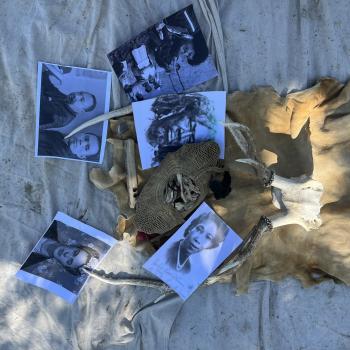
The ROCK Center
This is a photo from a centerpiece for “Peace Warriors” programming that I help facilitate in Aurora. Through a non-profit organization focused on art, mindfulness, and belonging, I lead programs where youth learn to become warriors for peace who are creative, connected, compassionate leaders and advocates in the world. Our programs are restorative and circle-based, and often we create the centers for our circles together, like in this photo. We also tell stories that center leaders for peace whose voices and stories have been marginalized, as emblematized by the photographs in our center. We also focus on nature and land-based connection, since this is the root of so many of our practices in building community and wellness.
-
Student Winner: Sophia Dellota
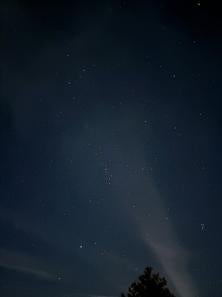
Just like one star alone can glow, but only so bright, one voice alone, one action alone, one person alone can only do so much. But many stars make constellations, many voices make a choir, many actions make a movement, many people make a collective. Community engaged work is about connecting people, each one containing a world of stories, hopes, and potential. And together, we can light up the sky.
-
Student Winner: Tiyanjane Dzilankhulani
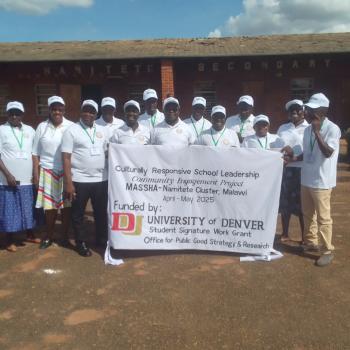
Massha-Namitete Cluster
Project phase 1: Culturally Responsive School Leadership for Improving Learning Outcomes for Rural Students MASSHA - Namitete Cluster, Malawi, This project Tiya and Lydia collaborated with the Malawi Secondary Schools Head Teacher’s Association (MASSHA) – Namitete Cluster embodies the CCESL framework for community-engaged learning by centering collaboration with 15 rural school headteachers committed to improving educational outcomes for over 5,000 rural under resourced students in the cluster who are underperforming at the National Examination. Guided by the reflect pathway, we recognize our role and responsibility as a community-engaged scholars, drawing from both our personal experiences and academic training to respond to the pressing issue of low student performance in the region. Through the think pathway, the project contextualizes the root causes of low performance such as the absence of culturally responsive practices and limited community involvement within historical and systemic inequities affecting rural Malawian schools. The connect pathway is activated by developing reciprocal relationships with MASSHA – Namitete Cluster school leaders to co-create knowledge through participatory workshops and the sharing of CRSL tools tailored to their unique rural context. As part of this process, we conducted a training workshop with school leaders to engage in Culturally Responsive School Leadership (CRSL), equipping them with practical tools to implement inclusive, community-rooted strategies in their schools. Finally, the act pathway is expressed through community-led strategy development by the school leaders aiming at dismantling exclusionary practices and positioning themselves as agents of culturally responsive change. This approach not only advances educational equity in the cluster but also contributes to our own growth as a scholar committed to the public good.
-
Alexandra Van De Water
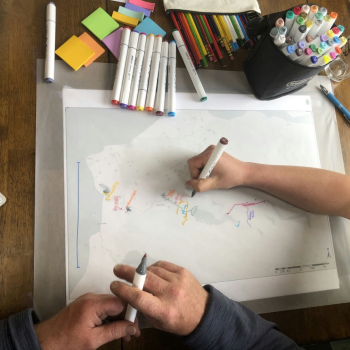
Kenai Watershed Forum
This project started when I, Alex, was in search of a topic for my capstone project for my master's in GIS. I knew I wanted to do something that would get me outside my comfort zone and would have a positive impact on communities. After many conversations, my idea was born: using participatory GIS to understand perspectives on salmon fishery management in Alaska. While I knew what I wanted to achieve, I had no idea of how, which is what brought Jecca into this project. She has many connections and a lot of knowledge on the most notable river to fish for salmon in the world, the Kenai River in south central Alaska.
-
Ali Argo & Lauren Skulina
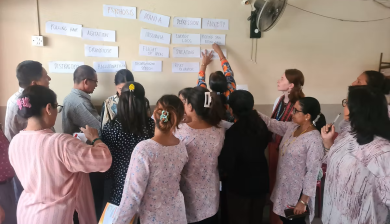
Perspective Shifting with Scheer Memorial Adventist Hospital
We conducted two formal interviews and compiled 38 pages of ethnographic observations, interactions, semi-formal interviews and researcher reflections. This data was collected across five departments at SMAH (outpatient pediatric ward, inpatient pediatric ward, gynecology, emergency and psychiatry), four municipality hospitals in the Kavrepalanchwok District (Mandanpur, Banepa, Namobuddha, and Bethanchowk), three local schools, both private and public (Jyoti Academy, Shree Secondary School and Vidhya Sagar Boarding School) and the Elijah Counseling & Training Centre (ECTC) in Kathmandu. We spoke with doctors (including one psychiatrist), nurses, medical officers, municipality officials, teachers and mental health counselors. Both formal interviews were conducted at ECTC with mental health professionals.
-
Anna Paradiso
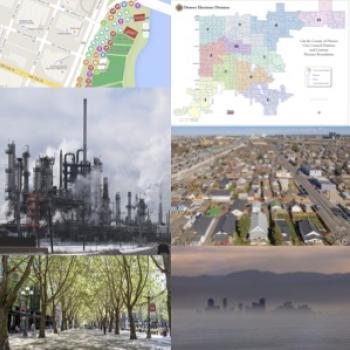
Accelerate Neighborhood Climate Action
I made a collage to represent the intertwining aspects of my work. My inspirational terms were data, nature, community, and environmental justice.
-
Antonio Bustillo
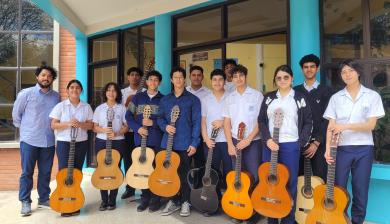
Escuela Nacional de Música de Honduras
Teaching Adventure at ''Escuela Nacional de Música'' in Honduras. I worked with very promising young guitarists at the high school where I first learned to play the classical guitar for six years. My dream is to provide these youth with the best opportunities they can get through very advanced music theory master classes and modern classical guitar techniques coaching.
-
Bryanna Rodriguez
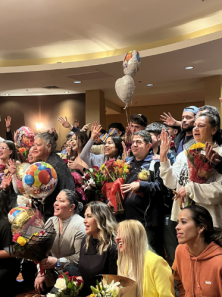
Breaking Chains: Youth Resilience in the Face of Adversity
Juvenile delinquency is an issue that affects all communities, but the perpetrators seem to always come from low income or segregated neighborhoods. That does not mean crime is a problem of the poor, but it does mean there is a systematic oppression that is at hand. Socio-economic factors and a lack of education are some of the root causes of this pressing issue. Effective solutions to this problem must include comprehensive community programs focused on education and rehabilitation. A world without crime is something we all dream of, but that is not realistic. What we can do though is align ourselves with initiatives and programs that want to see youth flourish. This is Camino 44, a program that invites people to become better versions of themselves.
-
Dayanara Farias
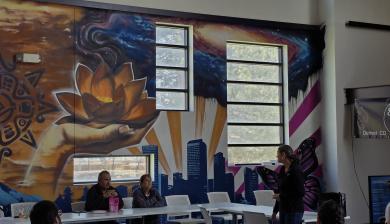
For me, this mural and gathering show the essence of what community-engaged work means to me. As we sat together in a vibrant space, surrounded by art symbolizing hope, growth, resilience, and liberation, I reflected on the power of connection and collective action. Through my work as a CCESL Scholar, I have learned that true change begins by thinking critically about the root causes of social injustice and honoring the histories that shape our present . By engaging directly with community members, listening deeply, and acting in collaboration rather than in isolation, I have embraced my role not as a "helper" but as a partner in social change. For that reason, I believe that these experiences have shaped my commitment to civic engagement to contribute to the public good, not just in moments of service but as a lifelong practice where transformation is seen through different eyes.
-
Diksha Patel & Pooja Mamadapalli
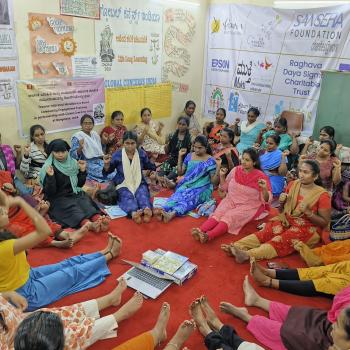
In the summer of 2024, we had the privilege of conducting an eight-week global mental health internship in the LR Nagar slum near Koramangala, Bangalore, India. The focus of our project was to explore the impact of domestic violence on these women and to introduce trauma-informed, mindfulness-based community engagement as tools or healing and empowerment. Over eight weeks, we created and conducted a series of workshops that combined psychoeducation on various topics, including body awareness, self-versus society, and victimhood, along with trauma education on domestic and sexual violence. These sessions were enriched with teachings from yoga philosophy, subtle body stretches (sukshma vyayama), breathing practices (pranayama), and mindfulness techniques, making our project both holistic and culturally relevant.
-
Drashti Chikhalia
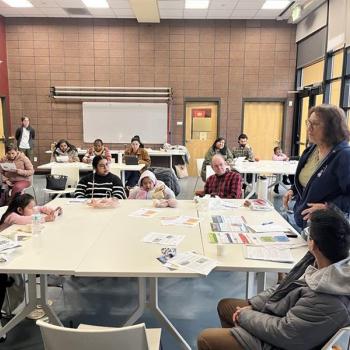
Valverde Movement Project
I am currently serving as a CCESL Fellow and working with the Valverde Movement Project (VMP). The Valverde Movement Project is a community-oriented initiative dedicated to promoting healthier, more connected living, particularly in urban neighborhoods like Valverde. Our efforts focus on community work within the Valverde neighborhood. This image captures our quarterly meeting at the Animal Shelter in Valverde, where we discussed the collaboration between the Valverde Neighborhood Association and Denver’s Office of Climate Action, Sustainability, and Resiliency. This partnership aims to reduce the impacts of extreme heat and poor indoor air quality. The program offers ENERGY STAR-rated AC units, HEPA-grade air purifiers, and utility bill assistance.
-
Ella Albert

Urban Wildlife & American
Squirrels, raccoons, deer, chipmunks and various insects. There's one thing these animals have in common with each other: They are the most commonly seen wildlife in urban environments. Through resourcefulness, resilience, adaptation and integration, animals are able to thrive in environments that aren't the most accommodating or friendly to them. Though it may not seem apparent at first, animals navigating cities and other urban areas are very similar to immigrants navigating their new lives in a new country. Both groups use closely related skills to learn how to live their lives the best they can, and though they might face challenges along the way, they can ultimately overcome these hardships.
-
Emily Perry
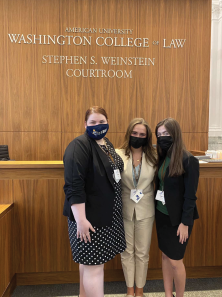
An Extension of Humanity
My community issue is the lack of accessible and affordable healthcare for those with autoimmune diseases, or IBD, in Colorado. This issue matters to the Rocky Mountain Chapter of the Crohn’s and Colitis Foundation because having access to the treatment that best address their healthcare needs positively affects the quality of their day-to-day lives and survival. In fact, according to the Safe Step Act Bill that was introduced by senators in 2021, this act improves “step therapy protocols and ensure patients are able to safely and efficiently access the best treatment for them” (Murkowski, at al., 2021).Consequently, this provides patients with a sense of agency and control over their health that is currently missing from our healthcare system.
-
Gaje Nathan

An Extension of Humanity
The community issue I want to address is poverty due to a lack of education. I think the best social change strategy for this issue wouldhave to be advocacy and raising awareness. The solution I hope we could one day achieve would be to educate more individuals andespecially the youth on how higher education can be the pathway to get more families out of poverty.
Talking about the issue and bringing more awareness and support from others would greatly help to solve the issue of poverty. By using our voice and advocating for more attention to be brought towards this issue is the way to ensure that the poverty stricken continue to receive education and higher education.
-
Julia Roncoroni
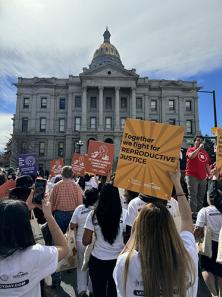
Cocina Libre
On March 17, 2025, our Cocina Libre team marched alongside thousands at the Colorado State Capitol in a powerful demonstration for immigrant rights. The photo we submitted captures a moment of collective resistance—signs raised, voices united, and intersecting calls for justice. One sign reads, “Together we fight for reproductive justice,” reminding us that while our struggles may differ, they are deeply connected. At Cocina Libre, we partner with immigrant communities to tell their stories through food—a medium of cultural memory, resistance, and healing. Our current work, involving undergraduate and graduate students, focuses on immigrant rights through community-based participatory research and public scholarship. In separate student-led projects, we have also collaborated with community around reproductive justice, including support for people who have experienced termination of pregnancy for medical reasons. These efforts reflect our commitment to community-led work across multiple fronts of injustice. Engaging deeply with community has shaped how we think, act, connect, and reflect. It has grounded our academic practice in lived experience and mutual trust. The march was not just an event—it was a reminder of the collective power that drives every aspect of our work.
-
Kimberly Guevara
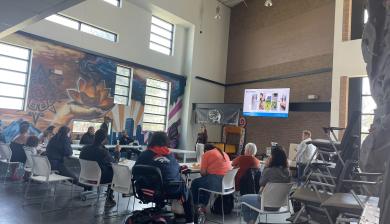
Valverde Movement Project
At the start of the school year, I came across CCESL’s work and got really interested in the Valverde Movement Project. I applied and was brought on as an intern to help with pretty much any administrative task. Over time, my role shifted more toward communications, and I found that I really enjoyed working with different stakeholders in the Denver Metro Area. I helped with a project to create a school garden at Florence Crittenton High School, where young mothers can learn about green jobs and prepare for careers after graduation through internships. One thing I learned about myself is that I enjoy helping communities stay informed about important issues, and I liked building the skills to be successful in my role.
-
Lindsay Baker

Reproductive Health Education in Senegal
Access to accurate reproductive health information is a challenge around the world, but cultural and religious taboos in Senegal, as well as gender roles that influence access to education and limited access to new digital technology has exacerbated this issue for Senegalese women and girls. Reproductive health information is vital to empowering women and girls to feel safe and comfortable in their bodies and make informed decisions about their futures (American Association of Pediatricians, 2024). Reproductive health can inform a woman’s life, as decisions about menstruation, childbearing, and more can influence a woman’s educational and occupational journey, and community relationships.
-
Rosie Strum
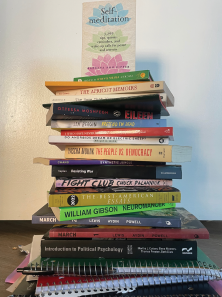
Are You Okay?
The University of Denver, and Universities across the world, have an obligation to prioritize and promote the mental wellbeing of their students. While DU has taken steps to support the mental health of their students, there is still much more that needs to be done in order to create a safe environment for young adults. The first step to raise awareness of the importance of this issue. For many students, arriving at the University is overwhelming. Living alone, far from the familiar is not an easy transition. The first step DU must take to better support their students’ mental health is to increase funding towards resources. Then, they must promote them and make the resources accessible to all students.
-
Thandiwe Sesa

The "Documenting the Past, Fostering the Future (DPFF)" team works on the National Endowment for the Humanities-funded “Youth Voice in El Movimiento” curricular project. The Fellow assists in cataloguing, archiving, and preparing oral histories collected as part of the project. A minimum of 12 of the oral histories will be processed for delivery to History Colorado in the summer of 2025. The fellow will also work with the DPFF team to develop short written statements about the various materials that are collected and to help curate appropriate content to appear on the project website.
-
Zayra Saucedo

Montbello Organizing Committee (MOC) and Montbello Urban Spectrum Edition (MUSE)
My Puksta Project is based on sharing the stories of members in my community, Montbello, in the form of articles that are published on the Montbello Urban Spectrum Edition (MUSE), a locally based magazine. These articles are meant to showcase the stories of success and collective work within the Montbello community that has been historically marginalized. It is also meant to serve as a source of support for community members. By interviewing Josefina, on the far left side of the picture, I learned how Food Bank of the Rockies impacts the community and its volunteers. Her story and of others I interviewed came out in the article title "More than Food: Montbello Food Pantry is a Source of Support and Community Connection" as a form of appreciation for the work they have done.
2024 Photo Showcase
-
Drashti Chikhalia
Valverde Movement Project
Ulibarri Park is at the heart of our efforts to make Valverde a desirable place to live. We are preparing the park to be a welcome place for everyone. It's not only about gorgeous trees and playgrounds, though. We're also making sure that everyone feels like they belong and can make a difference. By remembering the Ulibarri family, who were beloved by our community, we are keeping their spirit alive. Come join us in making Ulibarri Park a beautiful place where we can all enjoy nature, interact with one another, and improve our community.
-
Student Winner: Antonio Bustillo
Music for Latino American Communities
In this photo there are young students from the Conservatory Diaz Zelaya and the National Autonomous University of Honduras. Honduras is one of the countries in Latin America with less financial support for arts. These high school students and undergrad students are receiving a workshop in advanced techniques for classical guitar, something that is possible because of the ACE Grant and the CCESL support.
-
Rediet Ayanaw
College Track
College Track is an educational non-profit organization that provides support to students from under-represented communities to help them succeed in college and beyond. This organization believes that students regardless of their background, have the potential to reach their educational aspirations when given the right resources and support. I currently work as an IT-Coordinator at this site, where I am also the co-facilitator of “Apple Bites.” This photo captures a glimpse of what we do in our weekly sessions with high school freshmen. Here, I support the students in planning, designing, coding, prototyping and marketing their sustainable mobile apps on iPads. These skills not only provide access and exposure to technical skills not learned elsewhere, but also provides them with a sense of ownership and confidence that they will not notice they have until much later on. For many of them, it’s their first time using a tablet. Unlike their peers in more affluent areas, these students don’t have access to all the little perks such as extracurricular opportunities, technology guidance in careers, advanced coursework, and the privilege of being given multiple chances. Programs like College Track offer targeted academic/ career support, mentorship, and exposure to career opportunities which help reduce the educational divide. Most importantly, they build confidence and aspiration. There is a commonality among students from low-income communities who don’t see college as a feasible option due to their financial constraints, lack of role models, or low expectations- all set by their environments. These students were told and given many examples of how people like them would end up in certain places, so much so that it was all they believed for themselves. We recently finished the semester long Apple Bites sessions, and the biggest improvement I’ve seen in my students was the way they talked about themselves. In the first few sessions, they would explain they don’t know anything about coding, how they aren’t smart enough for the project, and how they are just there to meet the requirement. By the end of Apple Bites, they’re excited to show others the unique features of their app, and they’ve all signed up for the un-required “Mega Bites” for sophomores, because they realized they actually like this whole process. They just needed somebody to be patient with them while they explore. They really reminded me of myself and what I felt when I was their age, which is one of the reasons why my Puksta passion project is on education equity and access. These are the students who need the most continuous support and positive reinforcement- to encourage them to aim higher and to know they are not bound by their circumstances. Taking a holistic approach by addressing the emotional and social needs of the students is just as important as providing academic opportunities for forming resilience and a positive mindset that is essential for long-term success. This sense of belonging is important for maintaining determination and underlying core confidence needed to persist through life.
-
Amber Begay

Food Pantry – Center for Regenerative Futures
Uniting Against Hunger, One Plate at a Time! Our diverse global flavors reflect our commitment to inclusivity and solidarity, bringing people together from all backgrounds.
We've had successful collaborations with the Native Student Alliance, Brazilian Student Alliance, and TNX, a multicultural Sorority. We're more than just a meal service — we're a community-building initiative. By sharing meals and stories, we forge meaningful connections and strengthen our bonds. Together, we're tackling food insecurity head-on while fostering a welcoming environment for everyone.
-
Lilith Diringer
Girl Scouts of Colorado
Working on my project within the ACE Grant in collaboration with the Girl Scouts has been a truly rewarding experience. Through this community-engaged work, I have had the opportunity to think creatively, act purposefully, connect with others, and reflect deeply on the impact of my efforts. While developing an Edutainment toolkit for teaching children about sustainable travel in a fun and engaging way, I was able to make these kids the Changemakers of today. It was truly engaging to see them interacting with my material and providing honest feedback. Working that close to the target group was an experience that taught me a lot about always being oriented towards the ones you are creating a project for and working in an adequate, lean way, being able to adjust flexibly as needed.
Seeing the toolkit come to life and witnessing the excitement of the children as they engaged with the materials was really fulfilling and kept me motivated throughout the project, which in the end nearly to a full year from the first idea to the final closure. I feel privileged that I received the trust to conduct this project, and I believe that the impact of my work will extend far beyond the scope of the ACE Grant. Through this project, I have gained a deeper appreciation for the power of community-engaged work and the potential it has to create meaningful change. In the spirit of "Think. Act. Connect. Reflect" I have gained valuable insights throughout my project. Starting with extensive brainstorming and structuring, I was able to apply my theoretical academic knowledge to practical action. This led to direct connections with remarkable individuals from the community, further enriching my experience. These key learnings will stay with me beyond the project's completion including chances to reflect on my work such as this photo contest.
In my picture I let the mascots speak which I created as a creative tool to inspire kids and make them enthusiastic about sustainable decision-making. I hope they will inspire you too!
-
Student Winner: Olivia Hunte
Our Stories, Our Medicine Archives Project
The photo is a digital collage I created after interviewing Michelle Castor, a community member and herbalist, for the Our Stories, Our Medicine Project. In the collage, is a picture of Michelle I took upon their arrival to campus for the interview. In her hands she is holding a jar with marigolds as her archival artifact. I had the honor of conducting Michelle’s interview where they shared incredible narratives about themselves, their life’s work, their medicine and their relationship with/to nature. The information she shared within this 3-hour interview was so rich. Vividly remembering the details hours after the interview, I created the collage as part of my post-interview memo, an important practice to qualitative research. Captured with the collage are images inspired by the description of things Michelle shared during her interview.
-
Faculty/Staff Winner: Bonnie Clark
Amache Alliance, Amache Preservation Society, Colorado Preservation, Inc.
This photo captures a moment at the community archaeology open house at Amache, Colorado's WWII-era Japanese American incarceration camp and newest national park. It captures how research in the field creates opportunities for people across generations to connect: to each other, to an ancestral place, to a commitment to justice for the future.
-
Faculty/Staff Winner: Jessi Kalambayi
Ready for American Hospitality and ECDC African Community Center
This image is a mixture of our refugee students with their undergraduate mentors at a potluck we organized to celebrate their hard work. Though I am not represented in the image, the focus remains on the 2 student groups that benefit the most from this impactful experience. The Ready for American Hospitality program serves as a training program providing refugees, immigrants, and asylum seekers with US job readiness, customer service, and food safety skills during the 5-week course. This collaborative effort enables community building, confidence building, and resource sharing. I offer refugee 101 to the undergrad students before meeting their Protégé’s to have a better understanding of the refugee resettlement scene, but also to better equip them to understand the importance of diversity and equity in the workplace. As the program manager, I wear many hats for the refugee/migrant students, primarily their teacher, manager, and job counselor. Cheerleader, and their advocate. And sometimes just a friendly familiar face here at DU. Colorado has received one of the highest numbers of refugee arrivals in 40 years, with an additional hundreds of migrants coming to Colorado in search of work and safety. Seeking refuge from experiencing political upheaval, climate-fueled natural disasters, and violence. RAH provides a safe space for learning and cultivating a supportive community that strives to fill the knowledge gap before they begin their journeys to self-sufficiency. This support is provided not only through my lessons, but also through their peer mentors from the Human Capital Management course, the ECDC African Community Center staff, and Fritz Knoebel staff. With the growing needs of the refugee and migrant populations in our local communities, it is vital to evaluate the spaces we’re in and how we are utilizing our resources, expertise, and care to extend empathy and support to their growing needs. As an immigrant myself, who did not face the same linguistic and legal challenges coming to the United States, I must carry the responsibility of equipping them for the real world, through the knowledge I’ve acquired through my own personal journey. DU has provided me with the space and resources to do that, and that is the work I strive to do each day with grace and care. This opportunity has granted me a sense of purpose and fulfillment to be a small part of their journey of rebuilding a life in the United States.
-
Student Winner: Alice Kanyama
Seeds of Promise, Keeping Girls in School
In Malawi, many girls have been dropping out of school or missing classes because they lack sanitary products. These joyful faces were all around me as each one of them held the small bag that had many definitions-many days in school, comfort, dignity, freedom among many definitions. With good care, the reusable sanitary products will be used for four years. Upon noticing how much girls were missing school due to the economic hardships that has hit Malawi, we decided to do this project that will keep girls in school. We have learned the power of collaboration and what an impact an idea can do to change the norm.
-
Jay Keodonexay
What Had Your Country Ever Done For You?
In today's turbulent socio-political landscape, advocating for human rights has never been more crucial. As an active member of my community, my engagement work is deeply rooted in the principles of social justice, striving to amplify marginalized voices and advocate for systemic change. This art piece serves as a poignant reflection of the collective sentiment of feeling failed by the United States amidst the onslaught of over 480 anti-trans bills, the ongoing funding of Israel's actions in Gaza, and a myriad of other pressing political issues. It symbolizes the delicate balance of peace, often precariously held within the hands of those in power. Through this visual narrative, I seek to evoke introspection and provoke dialogue surrounding the intersectionality of oppression and the urgent need for solidarity in the fight for human rights. By selling this design alongside others in my art shop, with proceeds directed towards organizations championing the fundamental right to exist, I aim to catalyze tangible support for those most affected by systemic injustices. This endeavor embodies the essence of community engagement, bridging artistry with activism to effectuate meaningful change and foster a more equitable society.
-
Ally Langston
Valverde Movement Project
This photo reflects the Valverde Movement Project Team gathering in the Valverde neighborhood in Denver, Colorado. Together the team is positioned next to the Ulibarri Park sign, where the VMP project assisted in naming the unnamed park after influential leaders in the neighborhood.
-
Anastasia Ylegzhanina
Did you ever experience the feeling of being connected? Sensing or knowing, if you will, when you are accepted for who you are, without pressure or judgment? Being lucky enough to enjoy the moment or being just present while sharing the time with someone special?
If all the answers are "YES", I am genuinely happy for you.
-
Reina Ortiz
DU4Palestine, Ignite
On Tuesday April 30th, DU4Palestine staged a walk out at 11am. After the rally, we walked as a group to the light rail and joined the Auraria Encampment for the rest of the day. Being a part of this public demonstration was a truly empowering and special experience for me, especially because I was able to engage with a number of students, faculty members and community organizers in an honest and hopeful way. I took this picture after a long day of helping on kitchen duty and socializing with students from all over (DU, MSU, CCD & CU Denver). The amount of community support and outreach that day, and since, has been a one-of-a-kind experience and motivates me to continue working similarly around Denver and here at DU.
-
Marissa Martinez
First @DU
Unity Without Borders is a student-led organization dedicated to fostering an inclusive, supportive, and safe community for DACA, undocumented, and allied students. Our mission is to empower and uplift our members through comprehensive support and access to essential resources, enabling them to navigate the complexities of college and career pathways confidently. We are committed to raising awareness of the unique challenges faced by DACA and undocumented students and advocating for their rights and opportunities. Unity Without Borders is a new student group founded just this year and as a team we were able to plan a week of events for our DACA/UNDOCU week to promote awareness.
-
Nancy Lorenzon
Health Outreach for Latin America
With Health Outreach for Latin America (HOLA), DU students shadowed Nicaraguan physicians at over 10 different clinics. HOLA has a great relationship with the Ministry of Health, and the doctors they work with have consistently proved to be patient and effective educators when working with our students. Students also helped manage patient throughput at these clinics, checked vital signs, helped remove sutures, assisted on ultrasounds, and examined live malaria slides in the laboratory. Students observed a variety of surgeries in a local operating theatre. Students travelled to rural communities identified as areas that would benefit greatly from the hiring of an OBGYN. They met with local doctors and nurses, and conducted assessments that will help HOLA better understand its path of growth and create baseline data from which they can track their impact moving forward. This work is also invaluable in helping HOLA better understand other underlying health issues in these communities and what services the community members believe will be most helpful. Students traveled to a rural community to assist on over 100 spay neuters for cats and dogs, and to other rural areas to work with larger working farm animals (horses, cows, pigs etc.). Under the supervision of HOLA veterinarians, students helped administer vaccinations and deworming and parasite treatments to these animals providing a variety of treatments to over 500 animals in the past 2 years. This work helps to lower the burden of zoonotic diseases on the community while simultaneously improving the health of the community’s animals. The impacts that these experiences have on the students and that their work has on the rural communities in Nicaragua are extraordinary.
-
John Miller IV
Black Community Dinner in partnership with The Cultural Center
It is not a secret that finding your Black communities at DU can be an audacious effort. Beyond the challenges of the limited population size and the larger unknown history of Black contributions to DU, it can be difficult for students, faculty, and staff to discover their places and spaces on campus. In response to this understanding, Black Community Initiatives (BCI) and The Cultural Center (TCC) joined together to create a Black Community Dinner during Black History Month 2024.
Black History Month (BHM) is typically a time folx across the United States to honor and celebrate the contributions of Black/people from the African Diaspora to the world while also recognizing the injustices perpetrated against Black people globally. For BCI, BHM is also a time to embrace diasporic unity and celebrate the people who contribute their brilliance daily at DU. This community dinner was hosted at Saucey’s, a local Black-owned restaurant, giving some community members who find meaning in Black community spaces an opportunity to come together and celebrate our existence. Students, faculty, and staff came together to center culture, connection, and affirmation. Some may see only smiling faces at a one-time program, while others see a moment of oasis in a perpetual desert. Either way, look closer and you’ll find the hope for a more collective future at DU.
Let this photo be a challenge for us to:
Think [About Black People].
Reflect [On our responsibility to Blackness].
Connect [To the future of Blackness at DU].
Act [Like Blackness belongs here]. -
Faculty/Staff Winner: Hanson Nyantakyi-Frimpong
Community-Engaged Social Learning on Carbon Sequestration
Northern Ghana is a deeply patriarchal setting with entrenched gender norms. Patriarchal norms create gender injustices and hinder actions for social change, as women cannot voice key concerns in the presence of men. In my community-engaged research on climate change in this part of Ghana, it has become increasingly clear that having separate, closed meetings with Indigenous women and men is critical for gender-sensitive climate action. Such meetings have fostered gendered knowledge co-creation and provided avenues for moving beyond narrow analyses that treat gender, ethnicity, class, age, religion, and ability as separate and unrelated social characteristics. Such separate, closed meetings have also helped ensure that our public good research respects Indigenous culture, builds local capacity, and supports self‐determination.
-
Roo Rodriguez
Sand Creek Regional Greenway
This is a photo from the Visioning Exercises for the Sand Creek Regional Greenway (SCRG) Project held on 8th November 2023. This information-gathering activity is necessary to improve the Greenway. The group comprised people residing near the SCRG, alongside facilitator Le'alani Boykin of Connected Realities and design expert Chris Smith. They were encouraged to share their experiences and ideas on how the Greenway could be even better. While it is a small group, the engagement level was high, and they provided inputs that the SCRG-DU Team had not previously gathered. It was my first time being in this type of activity, and I was amazed at how people become comfortable sharing their thoughts if they are in a room where they can be heard. The space where the SCRG Team welcomed people from all walks of life allowed new ideas to form solutions that benefit the larger community.
-
Samantha Rodriguez
WHS STEM Mentoring
For my community-engaged project, I worked with the STEM mentoring community with Westminster High School students. At the beginning of this program, I remember being a bit timid by the process of sharing my journey within STEM. I wasn't sure if my story was worthy enough to share to students who are trying to figure out what they want to do in the future. Over the course of a few weeks, I began to build connections with the students at Westminster. Each week, they would ask questions about my college journey and what I wanted to do in the future, and I would give them advice and suggestions as they looked to decide their next steps. Over time, the process of opening up to these students became essentially natural and something I looked forward to each and every week. It not only allowed me to grow in a professional way but also allowed me to reflect upon my journey. We all have a story to share with others, and whether that changes the life of just one individual or the lives of many, we each have an important story to share. Being a mentor has been a learning experience for me and something that has allowed me to grow as an individual.
-
Zayra Saucedo
Unity Without Borders
With the student organization Unity Without Borders at DU this year, following a tradition, we held a week full of events to bring the DU community (students and staff) together to acknowledge and create awareness for DACA and Undocumented students at DU. By doing this the hope to create spaces where everyone’s story could be shared and validated is intended and has happened. The photo presents a small group photo on our second day tabling, where we were also sharing some snacks to everyone at the community commons. Hearing stories, sharing ideas, creating spaces and relationships throughout this week, but also along the way, has widely opened my eyes and mind to never forget those that need help but also acknowledge the ways I, as a person, need help too. We can all help each other and give the best from us. Because, if we don’t learn from our experiences and the things that break us then we are surely doomed.
-
Kylie Sutherland
Mutual Aid Monday
In my time at the University of Denver, I have learned about movements and organizations that provide access to resources for populations that need them. Since joining CCESL's Student Scholar program, I became directly involved in a mutual aid group that hosts weekly dinners, emphasizing the importance of sharing much-needed resources. Working with a mutual aid group has been eyeopening as I have met people I never would have interacted with elsewhere. At a dinner, a few weeks ago, the wind started to pick up as the sun went down, making my short sleeve shirt impractical. When someone pointed out my odd clothing choice, an unhoused man offered me the long-sleeve shirt he was wearing. While I declined his offer, the generosity struck me. The uniqueness of mutual aid is that it allows interactions like this one to occur. Mutual aid dispels ideas of charity, focusing on reciprocity that fosters connections based within community, rather than for a community. Working with a mutual aid group has not only facilitated my education but permitted the establishment of a community focused on a shared goal of supporting those experiencing homelessness. The separation between those experiencing and those not experiencing homelessness lessens when we take time to connect and support each other.
-
Giovani Valladares
Youth Organizing (Dr. Martin Luther King Early College)
This photo shows a student panel being held inside the Access and Transition Office for students in the Youth Organizing Class of DMLK. While the composition of the photo is one of a floppy nature, I believe it exemplifies the informal relationships that can be made through programs like Youth Organizing. We get to see a group of students who are already in their college careers give their knowledge to students who are aspiring for that same career and that generational transfer of knowledge for me is one of the most important elements that are found inside these kinds of programs. This unexceptional sense of truth hides that process of transfer to build stronger foundations for those youth. That constant building of stronger foundations across years of experience is integral to those kinds of programs that provide students with experience. I think back to my experience and how those older than me pushed me toward smarter decisions to ease my transition into college. The already difficult transition was softened by the words and advice of others who already passed their transition. To see that process from that outside perspective only strengthens my appreciation for those who saw me through my journey and a strong hope for those students in that photo to see less struggle than those before them.
-
Matthew Taylor
Proyectos Remedios Educativos (PRE) and the residents of rural communities in Tola, Nicaragua
This might look like a strange Photograph to submit, but a long story of "the Brothers Espen and Matthew" lies behind the happy faces. The photograph was taken in the winter of 2023 in Nicaragua. Espen, who graduated from DU in 2008, and I have known each other from his first year at DU in 2004. It was my second year at DU. Espen came to Guatemala with me on the Geography department's Field Quarter Program in 2006. Then, in 2007 we travelled to Nicaragua on the class I taught there Development Dilemmas. On both classes he saw social and environmental injustice as was determined to do something about it.
After living in rural Nicaragua for over a year and getting to know livelihoods there, he took action on the education front by building elementary schools in remote rural communities in Nicaragua. Long distances and flooding rivers often prevented students from getting to distant schools. Espen remedied this by building schools in the remote villages -- students would no longer have to walk long distances to and from school or risk crossing swollen rivers. How did it work? A community who wanted a school would petition Espen and his NGO called PRE (Proyectos Remedios Educativos). He then works with the community and the Ministry of Education to create a plan - - after all, a school without a teacher from the Ministry does not work! Then, Espen would provide a skilled builder and all the materials needed for building. The community would provide and coordinate all labor (including Espen's) making the building of the school a true community affair. Viola, a place that served elementary students and also, in many cases, became the community center as well. The schools were often the only places with electricity because Espen would install solar systems or convince the government to bring electricity to the school and village. Espen did this over and over, building 13 schools and other school structures in rural areas of Tola, Nicaragua. Now that the schools are all functioning, he provides funds to help maintain those structures.
Espen and I meet in Nicaragua at least once a year to reflect on what we are doing there and what we should do next. If we are lucky and overlap with a class of DU students in one of my interterm or field quarter classes, Espen takes them into the back woods to the schools and inspires the students to take action in their own ways. Many are inspired by Espen and say "wow, I cannot wait to graduate and start my own projects..." In our spare time, Espen and I reconnect and re-energize in the waves along Nicaragua's pacific coast. Surfers in the waves often say "hey, are you two Brothers." Espen slyly replies "ya, Matthew is my younger Brother!" But, yes, we are Brothers. Brothers in arms in our sustained efforts to improve the lives of rural Nicaraguans in the ways they see fit. I am humbled and proud to stand next to my Brother Espen.
-
Naichen Zhao
STEM Mentoring Program with Westminster High School
This picture was taken when the Westminster High School (WHS) high school senior students visited the University of Denver last November. In the picture, WHS students are enjoying pizza lunch, hanging out with their DU mentors in the Green Suite at Community Commons. This marks the first inperson meeting between WHS mentees met DU mentors after several weeks of virtual mentoring sessions. They are further building connections by talking about their school life, both as graduating high school students and STEM-majored college students and exchanging ideas of college applications and internship opportunities. It was so much fun, especially with pizza, snacks and many DU and CCESL swags! This picture captures joy, hope, collaboration and community engagement.
-
Sunjoi Gandhi
Girls Inc of Metro Denver
Every year, Girls Inc of Metro Denver (GIMD) hosts a week-long summer camp for the newest cohort of the advocacy program Leadership Out Loud (LOL). We have the schedule of our first curriculum heavy day, including team builders, a guest speaker, and a lesson on self-care. Each day is crafted to provide history and curriculum on an advocacy topic the cohort is passionate about while highlighting the importance of taking care of oneself before being capable of truly advocating for others. The group norms for this specific cohort are on display all day every day during the camp in addition to the question we all ask ourselves "What would need to happen to change/prevent/heal these oppressions". As the week goes by, the poster will be flooded with sticky notes as youth are engaging with the curriculum and creating ways forward for our future.
2023 Photo Showcase
-
Student Winner: Jay Keodonexay

Am I Visible Enough?
Since moving to Denver, I’ve had the opportunity to meet a diverse range of people with different backgrounds, identities, and experiences. Through these connections, I’ve come to understand how essential it is to be visible and present for those who are not able to do so. As a transgender man, bisexual, and biracial individual, I’ve been fortunate enough to be visible and use my platform to advocate for my community. To further this mission, I’ve recently started creating art again, with the goal of creating pieces that make people feel seen and heard. I’m also in the works of opening an online store, artloveshard, to sell art that celebrates diversity and authenticity. I plan to donate a portion of proceeds to organizations that support my community and create a space for others to be themselves. Additionally, the name artloveshard comes from my long-held motto of “love hard,” which means to put your all into everything you do, including loving everyone as much as you can. The pictured piece was created for Transgender Day of Visibility to highlight the importance of visibility in our society. Although visibility can be a privilege, it should not be taken for granted. Rather, it should be used to empower those around us and create a sense of acceptance and understanding. Through my art and online store, I hope to create a space where people can feel seen, heard, and respected, regardless of their identities or expression. Through meeting people from all walks of life, I’ve learned more about myself and my community than I ever could have imagined. This newfound knowledge and growth has enabled me to continue creating a space for people to connect and be themselves. Through my art, online store, and advocacy, I strive to create a safe and accepting environment where everyone can be proud of who they are and embrace their identity. I hope to continue to be a source of support for my community and to work towards a future where everyone is accepted and celebrated for who they are.
-
Student Winner: Samantha Rodriguez
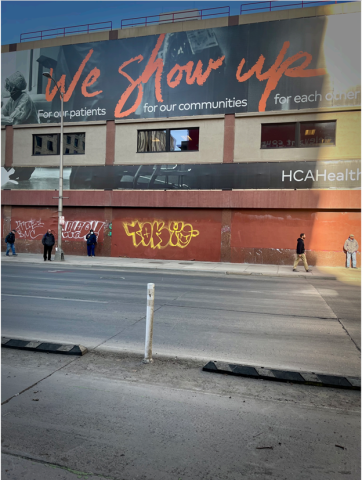
In the photo the billboard is captioned, " We Show Up. For our patients, for our communities, for each other". Currently working with the underserved community in Aurora, I am constantly showing up for my patients, for the community of Aurora, and for one another. This community work has demonstrated to me that a bit of work can go a long way. Everything started with the vision of wanting to help others. This is such a broad topic that needed to be defined. I want to be a doctor and began by making connections and finding people that could connect me with the right set of individuals. In that case, I found an internship with Dawn Clinic to help patients when they are getting medical care. I have joined a community that is determined to help as many patients as they possibly can when it comes to healthcare. no matter what your background is or who you are, we all deserve adequate healthcare, compassion, and to be told that we matter.
Title & Community Partner(s): We show up; Dawn Clinic
-
Student Winner: Sunjoi Gandhi
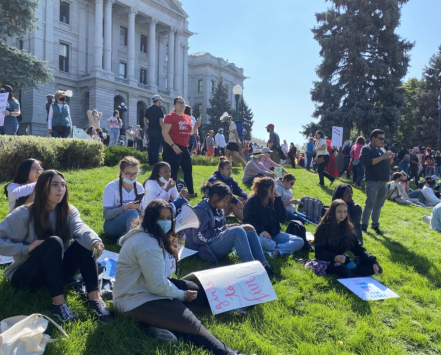
After a long, long day of rallying with the community for the protection of women's reproductive health outside of Colorado, students in the Leadership Out Loud Program by Girls Inc of Metro Denver felt empty. Despite the passion we feel to stand with our community in times of crisis, the exhaustion of social justice work can and will wear on you. In order to protect and take care of others, we must learn to take care of ourselves. Without taking moments to take care of yourself, a moment to eat, hydrate, rest, recenter, etc. we are unable to continue to fight for others. These students demonstrate taking care of oneself in order to take care of others within the community.
Community Partner(s): Girls Inc of Metro Denver
-
Faculty/Staff Winner: Matthew Taylor
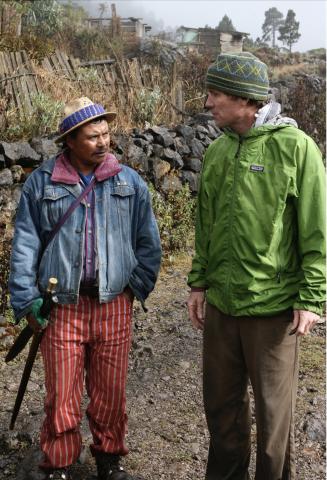
Working alongside Guatemala's Indigenous communities to understand how climate changes impact their natural resources takes time. Time to trust each other. Time to listen. Time to think. Time to make plans for more work. Time to think how we can better the world for future generations. Time to learn from each other.
Community Partner(s): The people of the Mam communities of Todos Santos, Huehuetenango, Guatemala
-
Anna Marlow
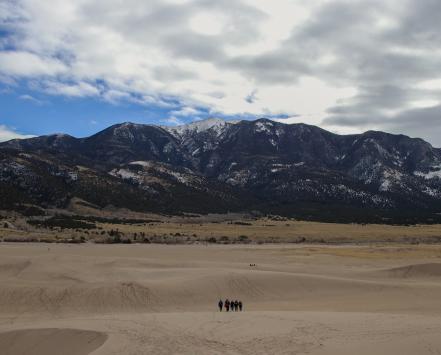
The Alpine Club has provided me with great opportunities to experience the outdoors here in Colorado by exploring places I have never been to before. I have met so many great people through this community, and I have made some very close friends out of these trips as well. When I brought my camera on this trip, I was able to photograph so many DU students while gaining important community connections with them as well. I was able to see somewhere I had never thought to go to before, while sharing the experience with so many new people who also encouraged me to try new things, like taking up climbing. I think that the DU Alpine Club does an excellent job of bringing so many people of different groups together, connecting with one another through the shared love of the outdoors.
Community Partner(s): Alpine Club
-
Ashton Taylor
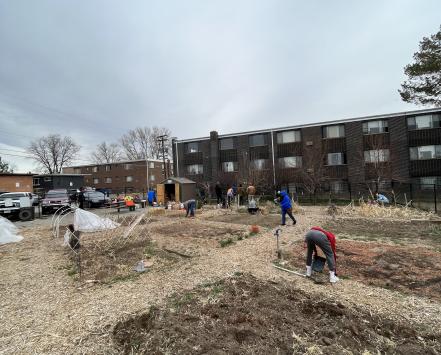
A quick photo I snapped while working at a D.U.G. in Montview Aurora.
Community Partner(s): Denver Urban Gardens
-
Brandon Arneson
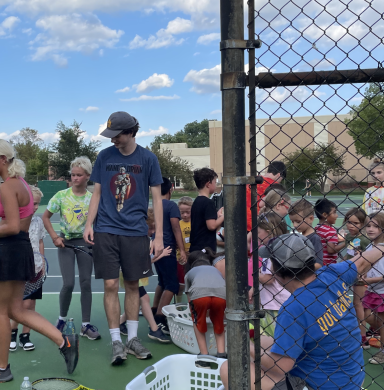
When I joined my high school's tennis team, I was the only one who had ever previously participated in organized tennis programming. This unfamiliarity was reflected in the size of the team, as we struggled to reach the minimum roster of ten players year after year. When I graduated, my Minneapolis neighborhood had only one youth tennis program available to its nearly 50,000 local residents. This singular program capped their registration at 20 people and cost $50 per week, presenting a financial barrier for a community where 75% of students receive free or reduced lunch. This was not an issue of interest; it was one of opportunity. Drawing on my community-engaged learnings and experiences at the University of Denver, I returned to my Minneapolis community last summer to organize a free, beginner tennis event for local youth. I partnered with Minneapolis Parks and Recreation to promote the event in both English and Spanish, as well as arranging for current players from my alma mater's tennis team to serve as coaches. With the aid of the University of Denver Passport Fund grant, I purchased balls and racquets for participants to keep – breaking cost barriers for entry into the sport. Over 60 youth attended the event and spent the day learning the basics of tennis and building community. Many of my former teammates, who never had the opportunity to play tennis before high school, brought their families and younger siblings.
This photo shows a group of participants and coaches on the day of the event. The fence in the foreground represents the obstacles to tennis access that youth in my community have faced. The courts in the background, which used to be cracked and unusable, are freshly laid and painted by the City. The sky is blue. The future, if only by just a little, is brighter.
Community Partner(s): Minneapolis Parks and Recreation, Edison High School
-
Clayton Kuklick
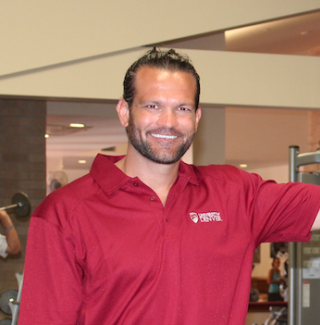
Flipping Technology and Giving Voice
Serving on the CCESL committee has afforded me the opportunity to explore various ways in which faculty members across disciplines engage community-engagement research projects. In this way, new ideas, networks, and approaches are generated for solving practical problems through impactful community-engaged research. Statement 2: A critical aspect of community-engaged scholarship is the communal agreement of a shared problem to solve. In our community-engaged scholarship, led by a student in the MASC (Master of Arts in Sport Coaching) program, we sought to explore a common problem for how sports technology creates and reinforces coaches' disciplinary practices (surveillance, control, etc.), which can unknowingly lead to athlete docility, amotivation, and a host of performance issues. Through community-engaged scholarship, we explored a potential solution to the problem by creating a technology that allowed for anonymous feedback to be provided to the coach from athletes which gave athletes a voice. Our findings highlight how the anonymous use of technology disrupted disciplinary practices used by the coach, empower athletes, and provided oodles of information to the coach that otherwise would never have been uncovered by technology.
-
Derek Brannon
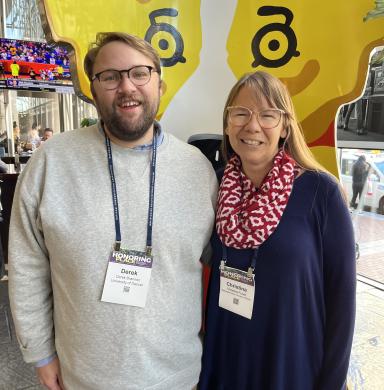
Understanding and Supporting Environmental Education: A Qualitative Study of Teachers and School Administrators
This photo was taken during the National Communication Association's 108th conference. Dr. Christina and I had just presented our work, a conference presentation sharing our findings from a study we had conducted in partnership with Denver Public Schools. This study explored how teachers naturally integrate ecological education into their day-to-day practices, despite doing not being a district mandate. This study has informed our current project, developing an ecologically-minded staff professional development program for and with DPS.
Community Partner(s): Denver Public Schools
-
Dhiona Jaramillo
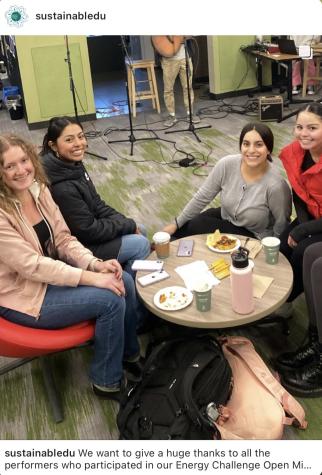
This is my attendance to a sustainability event that is another scope of projects that I have been looking into. It was an open mic night to raise awareness about energy and climate change. While this event was not directly related to my project I am working on now, I think it is important to be open-minded to new projects that I can participate in! I also love learning new things and sustainability is an important problem our world is facing right now.
Community Partner(s): Puksta, DAWN Clinic, Red Equity
-
Jackie Tran
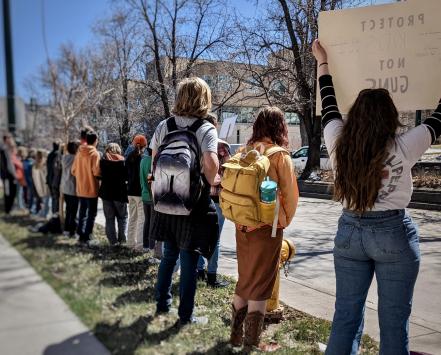
How Is Community Built?
This past year I've been exploring the meaning of community, particularly in organizing, mutual aid, and civic engagement spaces. It has been a year of learning and unlearning from others. The most salient lesson has been that advocates can - and should - be anybody. The work should be driven by frontline voices, the people most impacted, whether they are youth (as shown in this photo), immigrants, unhoused, or beyond. It has been amazing to see community members rise up, make demands, and advocate for themselves, their peers, their larger community. The system often feels broken in many ways, but by holding space together, by recognizing each other's strengths, by seeing where we can support and work collaboratively and collectively, that is where change happens. Perhaps, by doing this work together and centering youth voices we can make headway in protecting the nation's kids and not guns.

Lifespan Local CE Fellows Project: How is Community Built?
The Tower of Babel: The Babel parable describes how humankind came to speak multiple languages and became separated, as a punishment from God, because they were trying to "do the impossible." The devices shown are used to provide language accessibility at community listening sessions with English and Spanish speakers. It allows people to understand each other in near real time. When people understand each other and have shared "language," whether literal, emotional, intellectual, they build connection. This connection then provokes thought and reflection and ultimately, action. The realm of the possible grows. Change becomes more tangible and power is built.
-
Jenna Wyatt
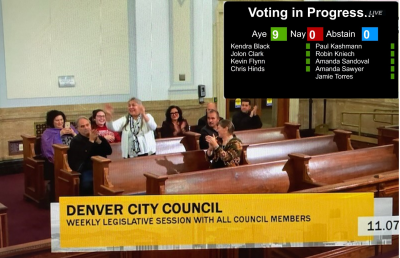
It took two years for this moment to happen. The moment in which Denver City Council unanimously passed the "Naming Of An Unnamed Park At Bryant & Ellsworth In Valverde." This unnamed pocket park, now called Ulibarri Park, honors the legacy of the diverse, often marginalized neighbors who have significantly contributed to community life in Valverde.
I have always been a sucker for family and community-building. In college, my peers and I would use any justification to host and create a safe space to gather - 'It is Tuesday, summer is almost over, I have this green shirt that would be perfect for a green-themed dinner....' Fixstated on community and safe spaces, I was shocked to learn that redlining of the 1930s resulted in Valverde not having a grocery store, library, church, and limited gathering space for community members. Yet, in the face of oppression, residents like Fred and Elaine Ulibarri fought for social justice using the Unnamed Park At Bryant & Ellsworth to gather and center their community's needs. Inspired by Fred and Elaine Ulibarri's stories and hoping to embody their legacy, I became a co-conspirator in the naming of Ulibarri Park. The Valverde Neighborhood Association has and continues to welcome me in as a co-conspirator to their ongoing efforts to build community health and wealth in Valverde. Working in stride with this group of neighbors has undoubtedly been a gift.
Community Partner(s): Valverde Movement Project and the Valverde Neighborhood Association
-
Kristen Park
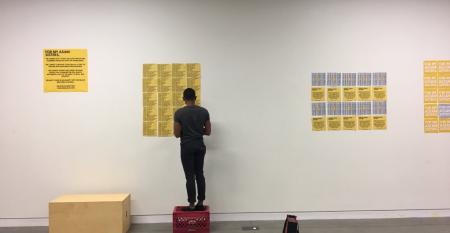
This photo was taken the night before the "For My Asian Sisters," art exhibit that I collaborated with the Margo-Okazawa Rey Foundation and Asian Americans Advancing Justice. The art was created through a community-based, participatory-action framework, which integrated aspects of social justice, multi- racial solidarity, and feminism. Asian American women from multiple generations shared their stories, voices, and experiences to be included in this exhibit. Aligned with CCSEL's ACT Pathway, the art exhibit was centered around understanding the strengths, challenges, and desired social change from the perspectives of Asian American women across multiple generations. My deepest love and gratitude to the women who shared so vulnerably with me during this process.
Community Partner(s): Margo-Okazawa Rey Foundation, Asian Americans Advancing Justice
-
Kristopher Tetzlaff
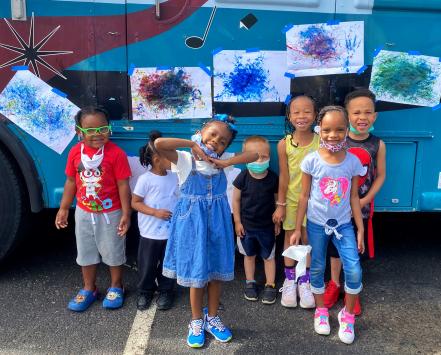
A democratic approach to enhanced community listening
I am interminably grateful to CCESL and DU Grant Challenges for funding and elevating this transformative community-based participatory research (CBPR) endeavor in partnership with students, families, and staff at You be You Early Learning (YbY)–Colorado's first and only mobile preschool and teacher-led cooperative. CBPR effectively positions teachers, students, and families as co-researchers and is commensurate with humanizing and culturally responsive approaches to community-engaged teaching and learning. Thanks to the generous ACE Student Scholar grant, I was able to cocreate an evidence-based photovoice protocol in collaboration with community researchers and gatekeepers at YbY. This Autumn, the protocol will be leveraged as a data collection tool to examine the perceptions of young children vis-à-vis the humanizing pedagogical practices implemented at YbY. Great thanks to the University of Denver and CCESL for making this possible!
Community Partner(s): You be You Early Learning
-
Luke Wachter

This photo show students entering the building for the Newman Center's student matinee series presentation of ArtistiCO, Colorado's premier ballet folklorico dance company. The student matinee series provides low cost and free performing arts experiences for metro area students which feature both local artists who reflect student's cultures and lived experiences as well as world renowned musicians such as the Mingus Big Band and The Dance Theatre of Harlem. These shows help student make connections between their communities and the larger artistic universe in the beautiful spaces of the Newman Center for the Performing Arts.
Community Partner(s): AristiCO student matinee featuring ArtistiCO dance company, and student from Denver Public Schools and Aurora Public Schools.
-
Madalyne Heiken
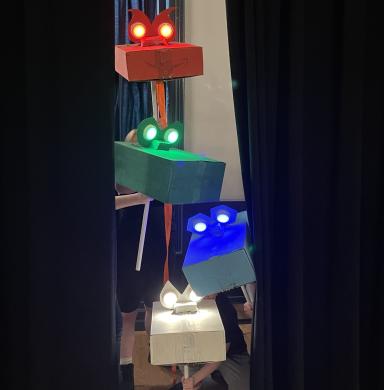
These dragon heads are a testimony to our tenacity as theatre makers. We have spent countless hours rehearsing our play and building these puppets and much more. The Tiamat (a nasty, five-headed dragon) challenges the main character and she fights back wholeheartedly. We fought any adversity we faced by leaning on each other, connecting with each other, and reflecting on our humanity. This show is a labor and symbol of love.
Community Partner(s): DSST: Byers Middle & High School The Power of Youth Artivism
-
Marissa Martinez Suarez

The following image captures a conference hosted by my sorority Pi Lambda Chi Latina Sorority, Inc. "Empowering Our Women of Tomorrow." Sisterhood, education, unity, and the preservation of Latina culture were all reasons why Pi Lambda Chi was founded at the University of Colorado at Boulder on March 5, 1994. Many young women, drawn together by their common need for a unique support system specifically geared to support, preserve, and teach Latino culture and history formed a union, on the University of Colorado’s Boulder campus. The impact that this community engagement work has had on me is immense. Many of the students who attended this conference are the same students I work with on a daily basis as a student teacher. To be able to see them at the University and for them to know that there is a space for them on this campus is one of the biggest joys that I cannot quite put words to.
Community Partner(s): Pi Lambda Chi Latina Sorority, Inc., DMLK Early College, South High School, "Empowering Our Women of Tomorrow"
-
Mona Moayedi

#Woman, Life, Freedom: Iran Today; a two-months exhibition of digital artwork made on women's right, social justice, and the women-led uprising in Iran for human rights. It engaged DU art students, and Iranian, and non-Iraian artists around the world. The photo is related to one of the events held during the exhibition which was a hybrid panel with the artists whose work was shown in the gallery. It was an open discussion between the artists, students, Iranian community, and faculty.
Community Partner(s): Du community (Emergent Digital Practices Program), Iranian community
-
Rediet Ayanaw
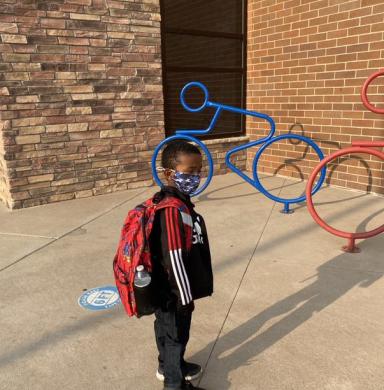
In this photo is a kindergartener on their first day of school at an Elementary in a nearby district. This time was around Covid, and when everybody had to move online- it was really hard for a lot of families around this time period, and especially for children who had to learn through a screen. After quarantine, the number of online resources increased dramatically- possibly due to the demand of having online classes. These resources improved majorly, but there are some resources that haven't so far. Resources are very important for every student to have accessible to them, and it's only right that students have an equal amount of resources. These resources include things like after school help, direct one on one assistance, etc. We know now after quarantine that these resources are out there and can be given if asked, which is what we need to start doing- asking for and creating these resources.
-
Santo Fothergill
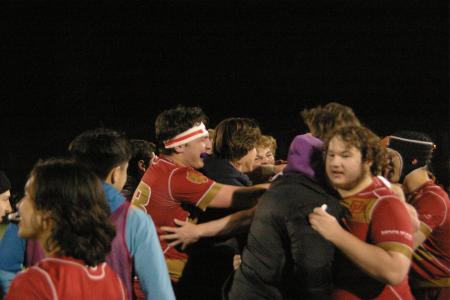
Before coming to college many people told me the importance of joining some sort of community. As a way to meet people and make friends, either ones like minded or diverse. For many people like me that group they join is a fraternity. While the brotherhood aspect of a fraternity was something that appealed to me, it was never thought it was something that was quite right for me. But then I discovered the Club Rugby Team here at DU. The mix of the brotherhood and playing a sport was the community I was looking for. Joining this community was the best decision I've made since joining college, as I've made bonds that will last me a lifetime and have become a better person from it. This photo has pictured members of the team celebrating our win after our final 15’s games of the season. Last season they had beat us in the national final, and we came into this game as underdogs. Through a lot of hard work, and sacrifice by our team we were able to squeak out a win, and emotions were high because of it. That's why this is one of my favorite photos that I took this season, while other photos' technical attributes may be better none of the other photos I took really capture the love and passion we have for each other on the team, nor what makes our community truly special.
-
Shubham Sapkota

This is the road to the community in Nepal with whom I did field work for during my 2nd year of CCESL. Even though I have loved doing community engaged work, the hardship of rural communities is real and very difficult to see. Most people take paved roads and infrastructure as granted. Though, that is not the case for most across the globe, especially in rural parts. This picture shows road construction in ongoing traffic road for which, all vehicles are stopped for several hours so that the work can be done. During road projects, roads being closed for 5-6 hours a day is very normal. As you can see, everyone is eager to see what is going on, despite it blocking and halting their day-to-day lives.
-
Theo May
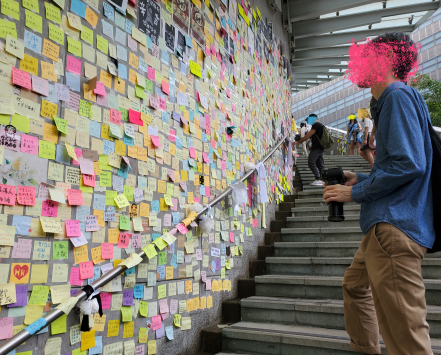
This is a photo of a Lennon Wall in Hong Kong. These post-it note collages are a way for people to freely expresses their views in a way they can't do anymore because of the crackdown on protests. Through my experiences with this, and at DU I've learned that we need to protect freedom of expression in order to ensure our democracy. Faces are scratched out in order to ensure the safety of those in the photograph.
-
Zoë Stelzer
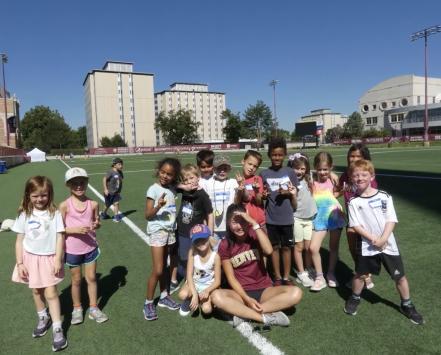
Sports and outdoor activities are incredibly important for children. Not only do they provide opportunities for physical exercise and development, but they also offer a range of benefits for mental health and social skills. Through both, they can learn teamwork and perseverance and can foster a sense of curiosity and appreciation for nature. These opportunities shouldn’t just be for privileged children, and I want to help expand DU PASS Camp to be more accessible to every kid in Denver and the surrounding areas.
2022 Photo Showcase
-
Exemplary Engaged Pathways Award: Conner Goode

"Less Talk More Action"
This photograph is a photo of strength, resistance, and unity. As institutions of oppression continue to threaten the necessity of education, lifelong learning, and curiosity, it is more imperative than ever to push back towards equality and equity for all. This photograph symbolizes the bravery, strength, and courage of graduate student within the Graduate School of Professional Psychology as they protested against an unjust system of privilege. Different programs including masters and doctoral students, alongside supportive staff and faculty, marched against the deep injustices imbedded within this institution. This photograph, deprived from color, symbolizes the times this institution is living in, one of the past and not of the future. The diverse faces marching as one shows a front that cannot be divided when faced with such daily difficulties. Hopefully, this photograph will instill a sense of combatting feelings within the audience. Feelings of hope and sadness, alongside feelings of pride and anger, all working together to rebuild this institution into what it should be, a place of learning and growth for all.
-
Connect Award: Mi Nai San
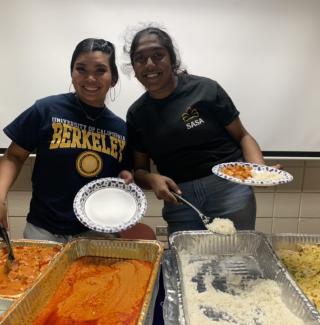
"Serving looks and Iftar"
During the month of Ramadan a lot of Iftar dinners were hosted but the most memorable one to me was this one. The South Asian Student Alliance and the Muslim Student Association came together and did a collab together. MSA brought their dates to break fast while SASA got Indian food catered. Both of my world's/identities collided and came together which made it memorable for me. In this picture me (left) and Shreya (right) the president of SASA posed before serving food to those who fasted and those who didn't. A woman can't fast while menstruating so it felt nice doing a good deed by serving others, something Ramadan is all about.
-
Connect Award: Marissa Martinez Suarez
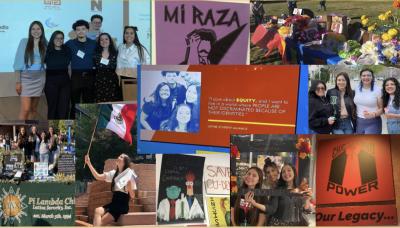
Featuring work with Access and Transitions, Latine Student Alliance, Latinos in Heritage Congreso, and Pi Lambda Chi Latina Sorority, Inc.
Throughout my triumphs, victories, and failures, I have never forgotten my Latine community. My community has taught me so much through their dynamic personalities filled with self-expression, fearlessness, and resilience. I have learned through them what it means to be part of a whole. I understand that the connection we share is one where we look out for one another. The emotional support they have provided me through hard times has allowed me to get where I am now. This year through the platforms offered by community partners, I have been able to engage with my Latine community, grow in my cultural identity, and define what being a Latina means to me. The following collage reflects events I've gotten to host with my community and opportunities I've gotten to engage in. From spending the day learning about the conservation of Latine Heritage in Denver, CO, and the efforts being put forth to working with different organizations in the promotion of cultural awareness and inclusivity, I've been able to see and promote the representation I lacked growing up. Together with my community, we've been able to create spaces for mutual empowerment.
-
ACT Award: Sunjoi Gandhi
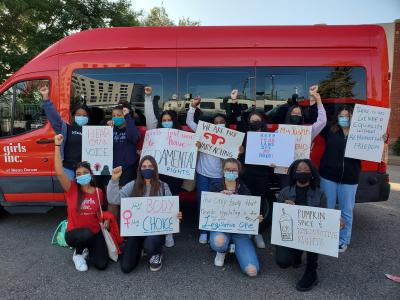
Featuring work with the Girls Inc of Metro Denver, Leadership Out Loud program
After the Texas Heartbeat Act, communities across the nation came together to show support for those seeking abortions without appropriate access. In Denver, various organizations came together to demonstrate how easily accessible reproductive health resources are to show support to women in Texas. Girls Inc of Metro Denver brought our advocacy and activism high school students to the rally for them to experience community coming together and how advocacy can take various different forms, one being protest.
-
Act Award: Dhiona Jaramillo

Featuring work with the Red Equity Coalition
This picture demonstrates a period packaging day for the Red Equity community. This represents the connect pathway for CCESL considering we brought a group from the Denver community together to give high school students volunteer hours as well as help those who are in period poverty. Period poverty refers to those who can’t afford menstrual products including tampons or pads and those who may not know how to use these products or the dangers (like toxic shock syndrome) of them. From this packaging day, the packages went to Afghan refugees who had fled their country to Denver shelters.
-
Think Award: John Macikas
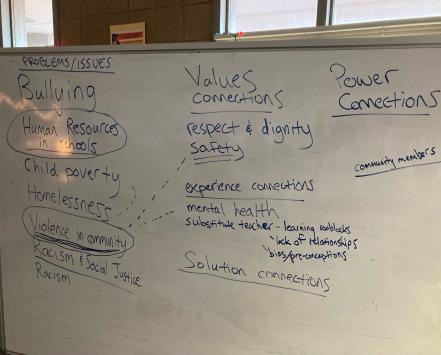
"Gun Control Under Control"
The work of community organizing in Public Achievement requires centering youth voice, knowledge and experiences. Creating contexts in which youth can authentically share their ideas and experiences can often be a challenge. However, there was one particular moment when I felt that students realized we took their ideas seriously.
Each student had reflected and written on an issue that was important to them and their self-interest with respect to the issue. When we asked for students to share what they wrote, they were hesitant to volunteer. So, we simply went around and shared in a circle. As the students shared their issues, I decided in the moment to take out a marker and write the issues on a white board. It was at this moment that I believe the energy in the room changed. When I started writing down their ideas, the youth began to sit up, and they studied the issues on the white board with intent. As each student shared, they became more animated and interested in what they had written and what they wanted to say, and the others listening leaned in further. In short, it was as if students realized in this moment that what they had to say was not going to be minimized but rather centered in consideration of issues present in their community. When we asked what themes they saw from what they shared, students closely observed the concepts on the board and made connections, and more students began to freely volunteer their thoughts. I believe that writing ideas on the board showed the youth that we were less interested in mere answers to our questions and more interested in their lived experiences and what those meant for their public work. As we continued to discuss over the remaining weeks, I felt an authenticity and sense of ownership in the room as students began to process their thoughts about the root causes of the different issues we were exploring.
-
Think Award: Meghan McCarroll
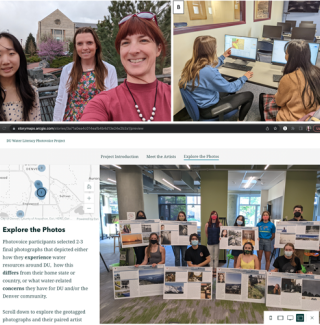
Engaging Decision-makers with Campus Water Literacy
Last year’s Water Literacy photovoice project demonstrated that while college students have strong interests and concerns about water resource sustainability, they often feel left out or neglected in water management processes. But where do we go from there? How can college students share their water-related needs and concerns with local water managers and decision-makers? And how can we expand the reach of a standalone photovoice project to maximize its impact and allow project results to live on? Our reflections on these questions, paired with discussions from local community partners and water educators, led to the creation of a story map centered around the Water Literacy Photovoice project. The goals of the story map are threefold: to continue to share the photovoice project results well beyond the final exhibit; to invite broader participation of DU’s student body by allowing them to share their own water-related thoughts and photos; and to provide an interactive tool to local water decision-makers that helps them to understand and engage college students and their various water literacies.
Pictured here is the team of student scholars who assisted with the creation of our story map (Photo A – Scholars Juanlin Liu and Katie Yocum with Fellow Meghan McCarroll. Missing Caroline Daley). The process required learning technical knowledge about ESRI products and spatial data displays (Photo B – Katie Yocum and Juanlin Liu collaboratively work on building a map of water resources). The end result is a beautiful, engaging and interactive story map (Photo C – a screenshot of the story map, with a picture showcasing the photovoice project participants and their photo displays at the final exhibit) that can be shared on indefinitely with both DU’s student body and local water decision-makers.
-
Reflect Award: Jessica Villena Sanchez

Featuring work with the Valverde Movement Project
I joined the Valverde Movement Project (VMP) in February 2021. This project seeks to bring community health and wealth to Valverde, a historically marginalized and redlined neighborhood in west Denver. Through several community engagement events and constant communication with community leaders and members of the Valverde Neighborhood Association, VMP has worked to empower this community by uplifting their stories of resiliency, strength, and hope for a brighter future. VMP has also created a hub site where Valverde's stories of past promises, present opportunities, and future hopes are shared in the form of story maps. More recently, VMP is supporting Evon Lopez, a local community activist, in naming a pocket park located in Valverde in celebration of her parents who were also community leaders and, among other things, participated in Denver's Chicano Movement and founded "Servicios de la Raza", an organization that provides mental health services to Latinx communities.
Personally, being a part of CCESL's Fellow program helped me realize how relevant it is do work that actively engages disadvantaged communities and uplifts their stories. CCESL creates a wonderful space to discuss the relevance of community engaged work that seeks to create more just communities by, for example, undesigning previous redlined constraints. As a Geographer, as an immigrant, as a Mexican scholar, I see how much we need to not forget about the history of our cities, listen to people's stories, and build trust with community members. I loved being a part of the VMP and CCESL's Fellow program, my only complaint is that I didn't join sooner!
-
Reflect Award: Calvin Lee
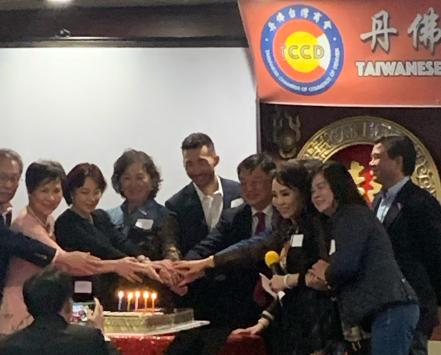
Featuring work with The Taiwanese Chamber of Commerce of Denver (TCCD) and The Empress Seafood Restaurant
This is surely a blurry photo, but my favorite nonetheless. This photo was taken last night at the local Taiwanese Chamber of Commerce of Denver annual fundraiser and celebration event hosted at The Empress Seafood Restaurant. The TCCD is a coalition of local Taiwanese and Chinese community leaders, teachers, and business owners that gather to discuss ways of increasing community engagement in the local Denver community as well as bolstering economic pathways between Denver and the country of Taiwan.
Not only does the TCCD bring together various organizations, businesses, restaurants, and community members, but also bridges intergenerational gaps as well with the onboarding of new members, such as myself. This photo showcases a traditional Chinese custom of community cake cutting (which includes many photos taken for memories). Here, I am holding the cake knife with various community figureheads: TCCD board members, entrepreneurs, restaurant owners, school district board members, teachers, and more as we also celebrate the upcoming May birthdays and change into a new cycle in the Lunar calendar. This cake-cutting custom, as well as the event itself, signifies not only an expansion of community engagement across the Taiwanese and Chinese communities in Denver, but takes a step in ensuring that torch is passed down intergenerationally.
